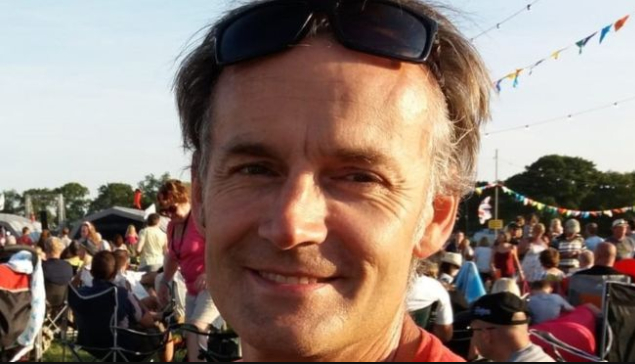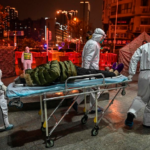There were 12 days between Steve Walsh leaving a business conference in Singapore and finding out he had been infected with the new coronavirus.
When he was tested, he did not even have any symptoms.
But it was still enough to set in train a series of events that have left health officials battling to stop the disease – now named Covid-19 – from spreading across the UK.
The 53-year-old had stopped over for four days at a French ski resort to see friends on his way back from the business conference. Unbeknown to him, he was spreading the virus as he went.
By the time he alerted the NHS and Public Health England (PHE), after being contacted by Singaporean authorities about the spread of coronavirus at that conference, he had already passed it on to 11 other Britons at the resort.
Five of them were also back in the UK by this stage – and two were GPs.
Between the six of them, they had come into contact with hundreds of people around Brighton and East and West Sussex before being isolated, giving the virus a real opportunity to get a foothold in the UK and marking the first major test of PHE’s infection containment plans.
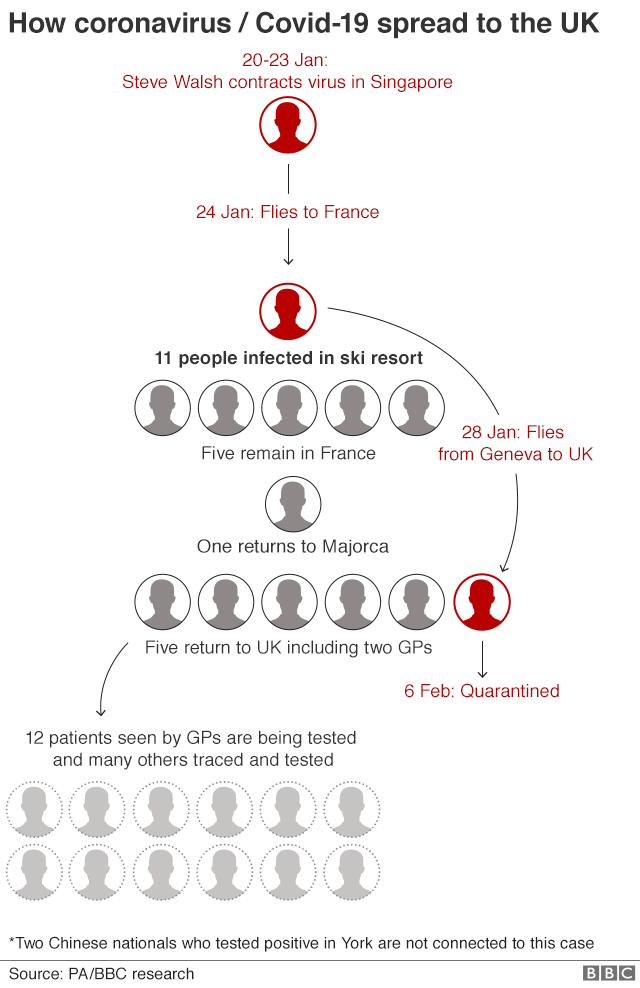
Mr Walsh, of course, was not the first person in the UK to have been diagnosed with the virus. But the previous two – both Chinese nationals who were in York – had had limited contact with others.
The race to contain the virus
PHE’s containment strategy was quickly put into action in both cases. Local PHE staff – there are nine teams across England – were sent to interview the confirmed cases to quickly piece together their movements.
It is a process being repeated in London following confirmation of the ninth UK case, a Chinese national.
This is called contact-tracing and has meant scores of people are being asked to isolate themselves at home. This self-isolation – different from the quarantining of British nationals repatriated from China – lasts until it is clear they are not going to get ill, which can take two weeks.
The hope is this stops the further spread of the virus – because there is no vaccine or cure, containment is the only option.
The rough rule of thumb means anyone who has had physical contact with the carriers or spent 15 minutes within 6ft (2m) of them is contacted and self-isolation considered.
That includes people who were within two rows of them on the flights into the UK and, in the case of Mr Walsh, bar staff in pubs where he had stopped for a drink and members of a yoga class he had taken part in.
For the doctors – both GPs by training – it has involved patients.
Between them, they had done shifts at an accident and emergency unit and two GP practices as well as carrying out a visit to a nursing home.
The fact doctors have become infected is, in many respects, the “worst-case scenario” for health officials as the virus is known to be most risky to the frail and vulnerable.
The only silver lining, according to those involved in the hunt for contacts, is they do not seem to have treated that many patients.
PHE believes only about a dozen people were seen by the two doctors during the shifts they did. At one practice, the GP only did paperwork.
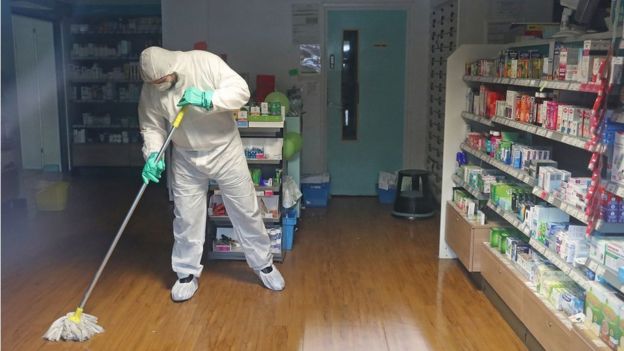
Those patients and many others now face an anxious wait to find out if they have been infected. The standard procedure is to wait to see if symptoms develop before testing – a negative test during the pre-symptomatic phase can be misleading.
But many in East and West Sussex have already been tested – as have others across the UK who have come in on flights from China, including those in quarantine in Milton Keynes and Merseyside, and those who had contact with the Chinese nationals in York. In total, more than 1,700 tests have been carried out.
Has the virus been contained?
PHE medical director Paul Cosford says the system of contact-tracing, isolation and testing is the best way of stopping the spread of the coronavirus.
He describes it as “incredibly robust” as shown by the fact the other Britons infected by Mr Walsh were found through the contact-tracing process
“That suggests it is working. If we can identify cases early, we can stop the spread.”
But is this really realistic? At Britain’s airports, flights coming in from at-risk countries, which include Taiwan, Singapore and Thailand, are being closely monitored.
Passengers are warned about which symptoms to look out for and given leaflets on what to do if they develop them, while captains have to sign declarations no-one is known to be ill on their flights.
Prof Neil Ferguson, an infectious disease expert from Imperial College London, says despite this, it will not be possible to catch every case, predicting that, for every one that gets caught, another two could slip through.
Those in the business refer to it as fires and sparks. Each carrier is a fire letting off sparks that may generate other fires. If those fires are detected, they can be isolated before letting off too many sparks.
But if they are not, the sparks breed new fires, leading to the risk of rapid sustained transmission.
A long way to go yet
Ministers and senior officials involved in containing coronavirus accept more UK cases will be likely, including, perhaps, transmission within the UK rather than just cases imported from abroad.
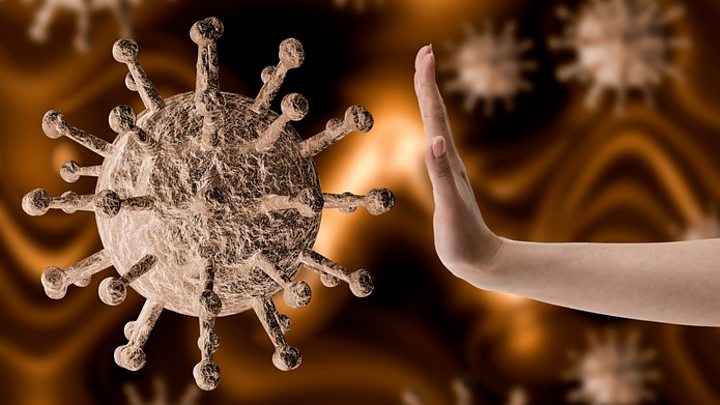
That in itself will not spell the end of the attempts to contain it.
It is only when there are five, six or seven links in the chain of transmission that health officials would concede containment is no longer realistic and instead focus all efforts on NHS contingency planning to cope with the surge in patients that would follow.
At the moment, there is only one link in the chain – Mr Walsh to the others on the ski holiday.
The biggest concern in the UK and abroad is what will happen if the virus starts spreading rapidly in nations other than China.
World Health Organization chief Tedros Adhanom Ghebreyesus said this would have the potential to “create havoc”.
This is because countries with weak health systems would find it more difficult to contain the spread and the nature of global travel and movement means even countries with sophisticated and developed surveillance systems would find it difficult to keep the virus at bay.
There promises to be many weeks of hard work ahead both here and abroad in the fight to contain it.
